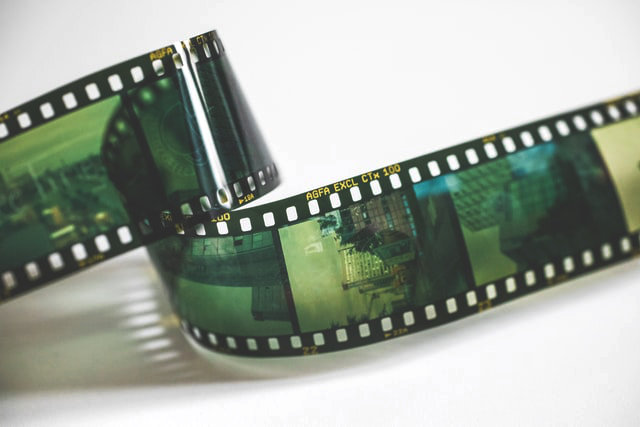The Trend For Film Wedding Photography
History and Nostalgia
The spread of film photography to the masses began in 1888. It took a while before the “soap boxes” and SLR film cameras appeared. At first, pictures were taken on special plates. With the passage of time and scientific and technological progress, the technology became more and more complex, but the photography itself became simpler, gradually transforming into the cameras that we already know and use.
The simplest example of what is already called “modern film photography” is soapbox cameras, which everyone is familiar with from his or her childhood. Atmospheric shots of nature, family celebrations, and children growing up. Think back to the film photos from your parents’ weddings. Such photos always evoke a kind of warm nostalgia. In addition to family photos, film captured images for fashion magazines and exhibitions.
e.g. Richard Avedon (photographer for Vogue from 1966-1990), Lillian Bassman (on the staff of Harper’s Bazaar since 1940), Annie Leibovitz (Vanity Fair contributor since 1983), Sheila Matzner (first woman photographer to work full time with Vogue). Their photos are inspiring, mesmerizing, and make you look at every detail.
There is a certain magic to photography that you can not get from a digital camera.
Fine Art
Film has long been associated with fine art in the wedding industry (Jose Villa, Maxim Koliberdin, Yulia Kaptelova, and others).This trend is gradually taking the lead in all areas of wedding photography.
Film is associated with airy shots, special “delicious” colors of skin and greenery, and highlighted photographs. Fine art has long established its right to film shots.
Along with fashion trends in wedding images, film photography has been gaining popularity in recent years and now extends to many areas of wedding photography beyond fine art.
Along with the new demand from brides for naturalness in processing and atmospheric muted tones in photography, there is a fashion for “flash in the face” shots, including film cameras, adding a touch of fashion to wedding images. Film photography is becoming more accessible because it does not require high quality images, staged artistic shots, or expensive professional equipment.
In order to get the same result in wedding video, you can make a post-production wedding video editing with Film Grain Effect.
The Romance of Film:
Along with the fashion for naturalness, naturality, and “life” in the frame, there appears in the film a way of capturing that very moment. The Romanticization of film photography Brides are attracted to unique retro-style shots and film magic. After all, we know exactly what’s going to come out of the digital photo. We have the ability to reshoot, delete, and process. We don’t have that option on film.
According to my brides, who are also very reverent about film, “there’s a slight, pleasant feeling of excitement, curiosity, and anticipation waiting for the result.” Film makes us think about which shot we are going to take next.
Limiting the number of frames doesn’t give you the right to shoot everything in burst mode. Film makes us think on the spot and “hunt” for that one shot.
What should I do if my photographer doesn’t shoot on film?
In addition to using film cameras by photographers, brides can use disposable cameras if they wish. For example, hand them out to the most fun and active guests and ask them to shoot what they want during the evening: the guests, the atmosphere, or the couple. This way, you’ll get more film footage, shot not “from the outside” but “from inside” your party.
Another cool trend is the use of Polaroid and Fujifilm Instax series instant film cameras. Such cameras can be rented. Very often, a host, an organizer, or a photographer has such an opportunity. Cartridges for these cameras can be purchased in almost all electronics stores. The cost of one cartridge (10 frames) is about $20.
The advantage of these instant cameras is that you do not need to wait for the development of your film; the picture immediately appears before your eyes. Such images are frequently used for the wedding book of wishes: next to the guest’s photo, there is a field where he can write his wishes to the couple or just kind words to remember.The only disadvantage of such frames is that they are difficult to digitize in good quality.
Which type of film should you choose?
The most popular color films at the moment are Kodak Gold 200, Kodak Ultramax 400 and Kodak Color Plus. My favorite black and white film is called Kentmere Pan 400. Fine art photographers would definitely add at least the Fuji 400H Pro and Kodak Portra 400 to this list. In my opinion, these films have the best skin tones and shadows.
As for film costs, at the moment, the cost of the films listed starts at $15 per reel (24 or 36 frames, depending on the film). You will also need to budget for scanning and developing the film. The cost of developing and scanning the film depends on the size of the output. On average, the entire procedure will cost about $10–$20 (per roll of film).
Wedding film photography is on its way out. Right now, it’s something unusual and new, giving photographers an edge over the rest. And the most adventurous brides have the opportunity to get even more atmospheric shots from the wedding.
Undoubtedly, nowadays, film photography will cover an even larger part of the industry.





